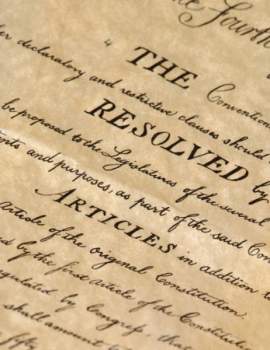
Federalist Papers Authorship & Purpose

Popular In Constitution
Purpose Of Lifetime Appointment And Pros And Cons Enumerated Powers Bicameral Legislature Background Article 3 Of The Constitution We The People 1st Amendment Who Wrote The Constitution Judicial Review Equal Protection Clause Three Fifths Compromise 5th Amendment 10th Amendment
The Federalist Papers are a collection of 85 political essays written by Alexander Hamilton, James Madison, and John Jay between 1787 and 1788. Though both Jay and Madison contributed articles to this publication, Alexander Hamilton was responsible for the majority of the content. Hamilton is credited with authoring 59 essays, Madison with 29, and Jay with 5.
Primarily, the inception of The Federalist Papers was a means to bolster support for the enactment of the Constitution of the United States. The authors chose to publish the entirety of the Federalist Papers in public journals and newspapers - albeit in the form of individual articles - in hopes that the dissemination of the ideas of the collective authors would both educate readers about the tenets of the Constitution, as well as to influence them to accept its commencement. Topics and principles addressed in the 85 essays that compile The Federalist Papers cover the entire spectrum of government, both addressing, as well as structuring, all three gubernatorial branches: executive, federal, and legislative.
In The Federalist Papers, three gubernatorial factions of government were established: the executive branch, the legislative branch, and the judicial branch. The Federalist Papers maintained that distributing power throughout three branches of government, rather than one totalitarian governing body, laws would be more specific, focused, and created in the interest of the citizens of that nation.
Though no definitive assessment can be made in regards to the influence of The Federalist Papers over the decision to ratify the Constitution, The Federalist Papers outlined the structural building blocks of a democratic nation.
NEXT: The Call for Federalism Overview




















